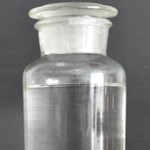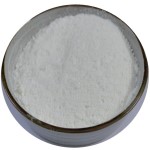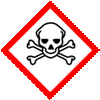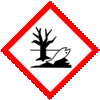 |
King of Chemicals Manufacturers |
Specifications, Properties, Uses, SDS of Benzalkonium Chloride USP BP Ph Eur EP IP JP Grade and Benzalkonium Chloride Solution Manufacturer Supplier Exporter Wholesale & Small Packs, CAS Number 8001-54-5 or 63449-41-2. |
|
| King of Chemicals has several associated companies having accreditations like cGMP, GLP - FDA Approved Good Manufacturing Practice and Good Laboratory Practice of WHO standard, ISO-9001, ISO-14001, ISO/IEC 17025, ISO ISO-45000, HACCP, FSSC 220000, FSSAI, "REACH" Registered, Kosher & Halal Certified. e-CTD and DMF support can be made available if needed. We offer USP NF BP Ph Eur EP IP JP Analytical Reagent FCC Food Grade Chemicals & Nutraceuticals. | |
        |
|
Muby Chem Pvt. Ltd. is a several decades old group of companies, engaged in manufacturing, supplying, distributing, wholesale supplies of Benzalkonium Chloride and Benzalkonium Chloride Solution for actual users, including retail or small pack supplies for research and development work.
We supply fine and speciality chemicals, pharmaceutical excipients, mineral fortifiers in chemically pure, analytical reagent grade, IP BP USP Ph Eur EP JP and other pharmaceutical grade monograph including FCC Food grade chemicals and Nutraceuticals at best prices. We and/or our associated units have all the facilities to supply as per cGMP standard observing good manufacturing practice and good laboratory practice. We can assure low microbial count and also offer a test certificate for the same. We maintain warehouses across USA, India, and UAE. Our group exports to USA, Canada, Mexico, Argentina, Brazil, Chile, Korea, Malaysia, Thailand, Indonesia, Europe, and several other parts of the world. We supply in wholesale container loads to small pack of few grams. Solid products may be specified for it size and shape as desired by the buyer.










Benzalkonium Chloride CAS Number 8001-54-5 or 63449-41-2
For Properties Specifications Uses of Benzalkonium Chloride Click Properties, Specifications, Uses, Price, Process of Benzalkonium Chloride Manufacturer.
For For SDS MSDS Sheet of Benzalkonium Chloride Click SDS Safety Data Sheet MSDS Sheet of Benzalkonium Chloride Manufacturer.
The Properties, Specifications, Monograph and Uses of Benzalkonium Chloride:
CAS Number: 8001-54-5 or 63449-41-2, EINECS EC Number: 264-151-6
Specifications of Benzalkonium Chloride BP Ph Eur Grade:
CAS 8001-54-5
Action and use: Antiseptic.
DEFINITION
Mixture of alkylbenzyldimethylammonium chlorides, the alkyl groups mainly having chain lengths of C12, C14and C16.
Content: 95.0 per cent to 104.0 per cent of alkylbenzyldimethylammonium chlorides (anhydrous substance) calculated using the average relative molecular mass.
CHARACTERS
Appearance: White or yellowish-white powder or gelatinous, yellowish-white fragments, hygroscopic. On heating it forms a clear molten mass.
Solubility: Very soluble in water and in ethanol (96 per cent). An aqueous solution froths copiously when shaken.
IDENTIFICATION
First identification: B, E
Second identification: A, C, D, E
A. Ultraviolet and visible absorption spectrophotometry - To pass the test.
B. Examine the chromatograms obtained in the test for average relative molecular mass and ratio of alkyl components.
Results The principal peaks in the chromatogram obtained with the test solution are similar in retention time to the principal peaks in the chromatogram obtained with the reference solution.
C. To 2 mL of solution S (see Tests) add 0.1 mL of glacial acetic acid and, drop-wise, 1 mL of sodium tetraphenylborate solution. A white precipitate is formed. Filter. Dissolve the precipitate in a mixture of 1 mL of acetone and 5 mL of ethanol (96 per cent) heating to not more than 70C. Add water drop-wise to the warm solution until a slight opalescence forms. Heat gently until the solution is clear and allow to cool. White crystals separate. Filter, wash with 3 quantities, each of 10 mL, of water and dry in vacuo overdiphosphorus pentoxide or anhydrous silica gel at a temperature not exceeding 50C. The crystals melt at 127C to 133C.
D. To 5 mL of dilute sodium hydroxide solution add 0.1 mL of bromophenol blue solution and 5 mL of methylene chloride and shake. The methylene chloride layer is colourless. Add 0.1 mL of solution S and shake. The methylene chloride layer becomes blue.
E. To 2 mL of solution S add 1 mL of dilute nitric acid. A white precipitate is formed which dissolves on the addition of 5 mL of ethanol (96 per cent). The solution gives reaction of chlorides.
TESTS
Solution S: Dissolve 1.0 g in carbon dioxide-free water and dilute to 100 mL with the same solvent.
Appearance of solution: Solution S is clear and not more intensely coloured than reference solution.
Acidity or alkalinity: To 50 mL of solution S add 0.1 mL of bromocresol purple solution. Not more than 0.1 mL of0.1 hydrochloric acid or 0.1 M sodium hydroxide is required to change the colour of the indicator.
Average relative molecular mass and ratio of alkyl components: To pass the test.
Impurities A, B and C: To pass the test.
Amines and amine salts: To pass the test.
Water: Maximum 10 per cent, determined on 0.300 g.
Sulfated ash: Maximum 0.1 per cent, determined on 1.0 g.
Specifications of Benzalkonium Chloride USP Grade:
Ammonium, alkyldimethyl(phenylmethyl)-, chloride.
Alkylbenzyldimethylammonium chloride CAS 8001-54-5.
Benzalkonium Chloride is a mixture of alkylbenzyldimethylammonium chlorides of the general formula: [C6H5CH2N(CH3)2R]Cl in which R represents a mixture of alkyls, including all or some of the group beginning with n-C8H17 and extending through higher homologs, with n-C12H25, n-C14H29, and n-C16H33 comprising the major portion. On the anhydrous basis, the content of the n-C12H25 homolog is not less than 40.0 percent, and the content of the n-C14H29 homolog is not less than 20.0 percent, of the total alkylbenzyldimethylammonium chloride content. The amounts of the n-C12H25 and n-C14H29 homolog components comprise together not less than 70.0 percent of the total alkylbenzyldimethylammonium chloride content. The total alkylbenzyldimethylammonium chloride content, calculated on the anhydrous basis, allowance being made for the amount of residue on ignition, is not less than 97.0 percent and not more than 103.0 percent of [C6H5CH2N(CH3)2R]Cl.
Identification:
A: To a solution (1 in 100) add 2 N nitric acid or mercuric chloride TS: a white precipitate is formed, and it is soluble in alcohol.
B: Dissolve about 200 mg in 1 mL of sulfuric acid, add 100 mg of sodium nitrate, and heat on a steam bath for 5 minutes. Cool, dilute with water to 10 mL, add 500 mg of zinc dust, and warm for 5 minutes on a steam bath. To 2 mL of the clear supernatant add 1 mL of sodium nitrite solution (1 in 20), cool in ice water, then add 3 mL of a solution of 500 mg of 2-naphthol in 10 mL of 6 N ammonium hydroxide: an orange-red color is produced.
C: A solution of it in a mixture of equal volumes of water and alcohol responds to the tests for Chloride.
Water: not more than 15.0%.
Residue on ignition: not more than 2.0%.
Water-insoluble matter: A solution (1 in 10) is free from turbidity and insoluble matter.
Limit of foreign amines: To 5 mL of a solution (1 in 50) add 3 mL of 1 N sodium hydroxide: no precipitate is formed. Heat to boiling: the odor of amines is not perceptible.
Ratio of alkyl components: To pass the test.
Benzalkonium Chloride Solution USP Grade:
Benzalkonium Chloride Solution contains not less than 95.0 percent and not more than 105.0 percent of the labeled amount of benzalkonium chloride in concentrations of 1.0 percent or more; and not less than 93.0 percent and not more than 107.0 percent of the labeled amount in concentrations of less than 1.0 percent. It may contain a suitable coloring agent and may contain not more than 10 percent of alcohol.
Caution: Mixing Benzalkonium Chloride Solution with ordinary soaps and with anionic detergents may decrease or destroy the bacteriostatic activity of the Solution.
Identification:
A: It responds to Identification tests A and C under Benzalkonium Chloride.
B: The residue obtained by evaporating, on a steam bath, a volume of Solution equivalent to about 200 mg of benzalkonium chloride responds to Identification test B under Benzalkonium Chloride.
Microbial limits: Solution containing less than 5.0% of benzalkonium chloride meets the requirements of the test for absence of Pseudomonas aeruginosa.
Alcohol content (if present): between 95.0% and 105.0% of the labeled amount of C2H5OH is found.
Limit of foreign amines: A volume of Solution, equivalent to 100 mg of benzalkonium chloride, and adjusted to a concentration of 1 in 50, meets the requirements of the test for Foreign amines under Benzalkonium Chloride.
Ratio of alkyl components: To pass the test.
Benzalkonium Chloride Solution and Benzalkonium Chloride Powder is also available as per EP IP JP Grade monograph.
The MSDS-SDS Hazard Statement of Benzalkonium Chloride:
Benzalkonium Chloride SDS Safety Data Sheet
MSDS, Material Safety Data Sheet 23-Sept-21
1. Product Identification
Product Name & Other Names: Benzalkonium Chloride, BZK, BKC, BAC, Alkyldimethylbenzylammonium chloride and ADBAC
CAS No.: 8001-54-5 or 63449-41-2
EINECS EC Code: 264-151-6
Relevant uses and uses advised against (if any): Industrial Manufacturing.
Suppliers: As per letterhead.
2. Hazards Identification
GHS, Globally Harmonized System Classification in accordance with 29 CFR 1910
Classification according to Regulation (EC) No 1272/2008
Acute toxicity, Oral (Category 3), H301
Acute toxicity, Dermal (Category 4), H312
Skin corrosion (Category 1B), H314
Chronic aquatic toxicity (Category 1), H410
Labeling according to GHS USA & Regulation (EC) No 1272/2008
GHS Label Elements  Toxic |
GHS Label Elements |
GHS Label Elements |
Signal Word: Danger
Hazard Statements:
H301: Toxic if swallowed
H312: Harmful in contact with skin.
H314: Causes severe skin burns and eye damage.
H410: Very toxic to aquatic life with long lasting effects.
Precautionary Statements
P260: Do not breathe dust/fume/gas/mist/vapors/spray.
P264: Wash ... thoroughly after handling.
P270: Do not eat, drink or smoke when using this product.
P271: Use only outdoors or in a well-ventilated area.
P272: Contaminated work clothing should not be allowed out of the workplace
P273: Avoid release to the environment.
P280: Wear protective gloves/protective clothing/eye protection/face protection.
P301+P310+330: IF SWALLOWED: Rinse mouth and immediately call a POISON CENTER or doctor/physician.
P302+P352: IF ON SKIN: Wash with soap and water.
P303+P361+P352: IF ON SKIN (or hair): Remove/Take off immediately all contaminated clothing. Wash with plenty of soap and water.
P305+P351+P338: IF IN EYES: Rinse cautiously with water for several minutes. Remove contact lenses, if present and easy to do. Continue rinsing.
P332+P313: If skin irritation occurs: Get medical advice/attention.
P314: Get Medical advice/attention if you feel unwell.
P330: If swallowed, rinse mouth.
P337+P313 If eye irritation persists: Get medical advice/ attention.
P360: Rinse immediately contaminated clothing and skin with plenty of water before removing clothes.
P390: Absorb spillage to prevent material damage.
P403+P233: Store in a well-ventilated place. Keep container tightly closed.
P405: Store locked up.
P501: Dispose of contents/container in accordance with local/regional/national/international regulations.
3. Composition/Information on Ingredients
Product Name/Synonyms: Benzalkonium Chloride, BZK, BKC, BAC, Alkyldimethylbenzylammonium chloride and ADBAC. >50% in water.
CAS No.: 8001-54-5 or 63449-41-2
EINECS EC Code: 264-151-6
4. First Aid Measures
Always seek medical attention after first aid measures are provided.
Inhalation: If inhaled, it will cause irritation and damage to nose and throat. Remove the victim to fresh air. If not breathing, give artificial respiration. If breathing is difficult, give oxygen. Get medical attention.
Ingestion: It will cause irritation and burns to mouth, digestive tract and stomach. Contact medical center quickly. Never give anything by mouth to an unconscious person. Get medical attention.
Skin Contact: On contact, it can cause itching, pain, swelling and redness. Immediately flush skin with plenty of water for at least 15 minutes. Remove contaminated clothing and shoes. Get medical attention. Wash clothing before reuse. Thoroughly clean shoes before reuse.
Eye Contact: It can cause severe damage to eyes. Check for and remove any contact lenses. Immediately flush eyes with running water for at least 15 minutes, keeping eyelids open. Cold water may be used. Get medical attention.
5. Fire Fighting Measures
Fire: Combustible.
Auto ignition temperature: NA
Toxic fumes, nitrogen oxides, carbon dioxide and carbon monoxide may be formed in fire.
Explosion: Not known.
Fire Extinguishing Media: Dry chemical, foam or carbon dioxide or water jet.
Extinguishing Media Not recommended: Avoid using solid water jet as it may scatter the fire.
Extinguishing Media Not recommended: Avoid using solid water jet as it may scatter the fire.
Special Information: In the event of a fire, wear full protective clothing and NIOSH-approved self-contained breathing apparatus with full face piece operated in the pressure demand or other positive pressure mode. At high temperatures under fire conditions, it may produce toxic or irritating fumes. Fire-extinguishing work is done from the windward and the suitable fire-extinguishing method according to the surrounding situation is used. Uninvolved persons should evacuate to a safe place.
6. Accidental Release Measures
Personal precautions, protective equipment, and emergency procedures: Ventilate area of leak or spill. Avoid breathing dust/fumes/gas/mist/vapors/spray. Use individual protective equipment (waterproof boots, suitable protective clothing, safety glasses, etc.). Restrict unprotected personnel from the area. Prevent any contact with hot surfaces. Do not approach facing the wind. Do not touch the spilled material.
Environmental precautions: Do not let the product enter drains, soil, or water sources.
Methods and materials used for containment cleanup procedures and Storage: Contain spilled material. Cover with an inert, non-combustible absorbent material, (e.g., sand, earth, diatomaceous earth, vermiculite). Vacuum or sweep-up and remove to an approved disposal container. Avoid mist formation. Keep away from heat. Keep away from sources of ignition. Provide ventilation. Wear full protective equipment and ensure proper ventilation.
7. Handling and Storage
Precautions for safe handling: Apply according to good manufacturing and industrial hygiene practices. Ensure proper ventilation. Wash thoroughly after handling. Do not drink, eat, or smoke while handling. Avoid contact with skin, eyes, and clothing. Minimize dust generation. Avoid breathing dust/fumes/gas/mist/vapors/spray. Avoid contact with eyes, skin, and clothing. Keep container tightly closed. Avoid ingestion and inhalation. Use individual protective equipment (waterproof boots, suitable protective clothing, safety glasses, etc.). Prevent any contact with hot surfaces.
Conditions for safe storage, including any incompatibilities: Store in cool, dry, and ventilated area away from heat sources and protected from sunlight in tightly closed original container. Keep air contact to a minimum. Store protected from heat, sparks and ignition sources and incompatible materials. Avoid contact with skin and eyes. Avoid inhalation of dust/mist/vapor. Do not store with incompatible materials like strong oxidizing agents and strong acids & alkalis and reducing agents. Keep away from heat and source of fire preferably in a ventilated area. Keep in tightly closed container. Do not breathe mist or dust. Do not store near food items.
8. Exposure Controls/Personal Protection
Airborne Exposure Limits: Contains no substances with occupational exposure limit values.
Ventilation System: A system of local and/or general exhaust is recommended to keep employee exposures as low as possible. Local exhaust ventilation is generally preferred because it can control the emissions of the contaminant at its source, preventing dispersion of it into the general work area. Please refer to the ACGIH document, Industrial Ventilation, A Manual of Recommended Practices, most recent edition, for details.
Personal Respirators (NIOSH Approved): For conditions of use where exposure to the substance is apparent and engineering controls are not feasible, consult an industrial hygienist. For emergencies, or instances where the exposure levels are not known, use a full-face piece positive-pressure, air-supplied respirator. WARNING: Air purifying respirators do not protect workers in oxygen-deficient atmospheres.
Skin Protection: Wear impervious protective clothing, including boots, gloves, lab coat, apron, or coveralls, as appropriate, to prevent skin contact.
Eye Protection: Use chemical safety goggles and/or a full-face shield where splashing is possible. Maintain eye wash fountain and quick-drench facilities in work area.
Other Control Measures: Maintain good housekeeping in work area. Dust deposits on floors and other surfaces may pick up moisture and cause the surfaces to become slippery and present safety hazards. Handle in accordance with good industrial hygiene and safety practice. Wash hands after handling.
9. Physical and Chemical Properties
Appearance: Colorless to slightly yellow liquid. (Anhydrous material is white to off-white powder).
Odor: Characteristic smell.
Odor threshold: Not available.
pH: 5 to 9.
Relative density: 0.97 approximate.
Melting point/freezing point: Not available.
Boiling Point: >100C
Flash point: Not available.
Auto-ignition temperature: Not available.
Decomposition temperature: Not available.
Upper/lower flammability or explosive limits: Not available.
Vapor pressure: Not available.
Vapor density: Not available.
Evaporation rate: Not available.
Flammability (solid, gas): Not available.
Partition coefficient: n-octanol/water: Not available.
Solubility: miscible with water
Viscosity: Not available.
Molecular Weight: Variable.
Chemical Formula: Variable.
10. Stability and Reactivity
Stability: Stable under ordinary conditions of use and storage.
Hazardous Decomposition Products: Toxic fumes, nitrogen oxides, carbon dioxide and carbon monoxide may be formed in fire.
Hazardous Polymerization: Not reported.
Incompatibilities: Strong acids & alkalis, oxidizing & reducing agents, heat, and sparks. Hygroscopic. Also incompatible with nitrates, anion detergents.
Conditions to Avoid: Heat, flames, ignition sources and incompatibles.
11. Toxicological Information
Toxic if swallowed; Harmful in contact with skin; Causes severe skin burns and eye damage.
Oral rat LD50: 240 mg/kg
Dermal rat LD50: 1420 mg/kg.
Reproductive Effects: No information available.
Developmental Effects: No information available.
Teratogenicity: No information available.
Carcinogenicity: The product is not listed as carcinogen by OSHA, IARC, ACGIH or NTP.
12. Ecological Information
Environmental Toxicity: Very toxic to aquatic life with long lasting effects.
Toxicity to fish:
mortality LOEC - Oncorhynchus kisutch - 17.8 mg/l - 3.0 d
LC50 - Lepomis macrochirus - 0.31 mg/l - 96.0 h
mortality NOEC - Oncorhynchus kisutch - 10 mg/l - 3.0 d.
Results of PBT and vPvB assessment: Not available.
Persistence and degradability: No data available.
Mobility in soil: No data available.
13. Disposal Considerations
Whatever cannot be saved for recovery or recycling should be managed in an appropriate and approved waste disposal facility. Processing use or contamination of this product may change the waste management options. State and local disposal regulations may differ from federal disposal regulations. Dispose of container and unused contents in accordance with federal, state, and local requirements.
14. Transport Information
Land Transport DOT USA, TDG Canada & ADR/RID Europe
UN Number: 3261
Proper shipping name: Corrosive liquid, acidic, organic. NOS (Benzyl-C12-14-alkyldimethylammonium chlorides)
Class: 8, Packing group: II
Sea Transport IMO/IMDG & Air Transport ICAO/IATA
UN Number: 3261
Proper shipping name: Corrosive liquid, acidic, organic. NOS (Benzyl-C12-14-alkyldimethylammonium chlorides)
Class: 8, Packing group: II.
15. Regulatory Information
USA:
SARA 311/312: Acute & Chronic.
California Prop 65: No Significant Risk Level: None of the chemicals in this product are listed.
Section 16 - Additional Information
DISCLAIMER: The information and recommendations set forth herein are presented in good faith and believed correct as of the date hereof. It is compiled from various sources, and it is not necessarily all inclusive nor fully adequate in every circumstance. In addition, these suggestions should not be confused with nor followed in violation of applicable laws, regulations, rules, or insurance requirements applicable. This SDS MSDS sheet is intended only as a guide to the appropriate precautionary handling of the material by a professionally trained person using this product. Individuals receiving the information must exercise their independent judgment in determining its appropriateness for a particular purpose. This shall not constitute a guarantee for any specific product features and shall not establish a legally valid contractual relationship. In no case shall our company be liable to loss or damages by the product user.
Benzalkonium Chloride Manufacturers, Suppliers, Exporters, Wholesalers:
King of Chemicals manufacturers

Plot No. 2900/46&47 + 2900/163to167, GIDC, Ankleshwar, Dist. Bharuch, India
India, USA, UAE
TEL: (Office) 91-22-23774610, 91-22-23723564
e-mail: info@kingofchemicals.com
Copyright and Usual Disclaimer is Applicable --- March 21, 2025
If I give you “My Word” Nobody can undo it.
If I sign an “Agreement” my Lawyer will undo it
Our products are for industrial and laboratory use only. The user must test the material before use. We are not dispensing chemists or druggist and do not offer over the counter type (OTC) products for medical use by individuals.
We and our associates manufacture pure chemicals surpassing Monograph Specifications of Analytical Reagent Standards, British & European Pharmacopoeia BP Ph Eur EP Standard, US Pharmacopoeia USP NF Standard, Indian Pharmacopoeia IP Standard, Japan Pharmacopoeia JP Standard, FCC Food Grade Standard. |
|

